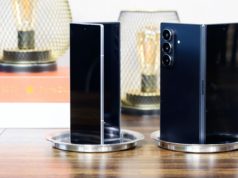ARM’s new supercomputer chip design with vector extensions will be in Japan’s Post-K computer, which will be deployed in 2020

Fujitsu’s PrimeHPC FX10 systems with ARM processors will power Japan’s next Post-K supercomputer.
Credit:
Fujitsu
ARM conquered the mobile market starting with Apple’s iPhone, and now wants to be in the world’s fastest computers.
A new ARM chip design being announced on Monday is targeted at supercomputers, a lucrative market in which the company has no presence. ARM’s new chip design, which has mobile origins, has extensions and tweaks to boost computing power.
The announcement comes a few weeks after Japanese company Softbank said it would buy ARM for a mammoth US$32 billion. With the cash, ARM is expected to sharpen its focus on servers and the internet of things.
ARM’s new chip design will help the company on two fronts. ARM is sending a warning to Intel, IBM and other chip makers that it too can develop fast supercomputing chips. The company will also join a race among countries and chip makers to build the world’s fastest computers.
The chip design is being detailed at the Hot Chips conference in Cupertino, California, on Monday.
Countries like the U.S., Japan and China want to be the first to reach the exascale computing threshold, in which a supercomputer delivers 1 exaflop of performance (a million trillion calculations per second). Intel, IBM and Nvidia have also been pushing the limits of chip performance to reach that goal.
Following Softbank’s agreement to buy ARM, it should come as no surprise that the first supercomputer based on the new chip design will be installed in Japan. The Post-K supercomputer will be developed by Fujitsu, which dropped a bombshell in June when it dropped its trusty SPARC architecture in favor of ARM for high-performance computers. Fujitsu aided ARM in the development of the new chip.
Post-K will be 50 to 100 times speedier than its predecessor, the K Computer, which is currently the fifth fastest computer in the world. The K Computer delivers 10.5 petaflops of peak performance with the Fujitsu-designed SPARC64 VIIIfx processor.
The new ARM processor design will be based on the 64-bit ARM-v8A architecture and have vector processing extensions called Scalable Vector Extension. Vector processors drove early supercomputers, which then shifted over to less expensive IBM RISC chips in the early 1990s, and on to general-purpose x86 processors, which are in most high-performance servers today.
In 2013, researchers said less expensive smartphone chips, like the ones from ARM, would ultimately replace x86 processors in supercomputers. But history has turned, and the growing reliance on vector processing is seeing a resurgence with ARM’s new chip design and Intel’s Xeon Phi supercomputing chip.
The power-efficient chip design from ARM could crank up performance while reducing power consumption. Supercomputing speed is growing at a phenomenal rate, but the power consumption isn’t coming down as quickly.
ARM’s chip design will also be part of an influx of alternative chip architectures outside x86 and IBM’s Power entering supercomputing. The world’s fastest supercomputer called the Sunway TaihuLight has a homegrown ShenWei processor developed by China. It offers peak performance of 125.4 petaflops.
ARM has struggled in servers for half a decade now, and the new chip design could give it a better chance of competing against Intel, which dominates data centers. Large server clusters are being built for machine learning, which could use the low-precision calculations provided by a large congregation of ARM chips with vector extensions.
ARM servers are already available, but aren’t being widely adopted. Dell and Lenovo are testing ARM servers, and said they would ship products when demand grows, which hasn’t happened yet.
ARM server chip makers are also struggling and hanging on with the hope the market will take off someday. AMD, which once placed its server future on ARM chips, has reverted back to x86 chips as it re-enters servers. Qualcomm is testing its ARM server chip with cloud developers, and won’t release a chip until the market is viable. AppliedMicro scored a big win with Hewlett Packard Enterprise, which is using the ARM server chips in storage systems. Other ARM server chip makers include Broadcom and Cavium.

![[Design Story] One UI Helps You Live Life Your Way – Samsung](https://loginby.com/itnews/wp-content/uploads/2025/11/1763476351_Design-Story-One-UI-Helps-You-Live-Life-Your-Way-238x178.jpg)




